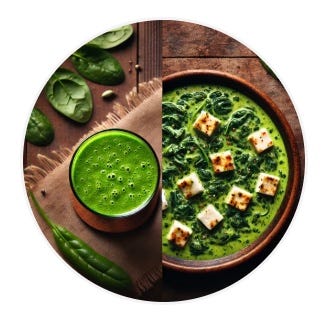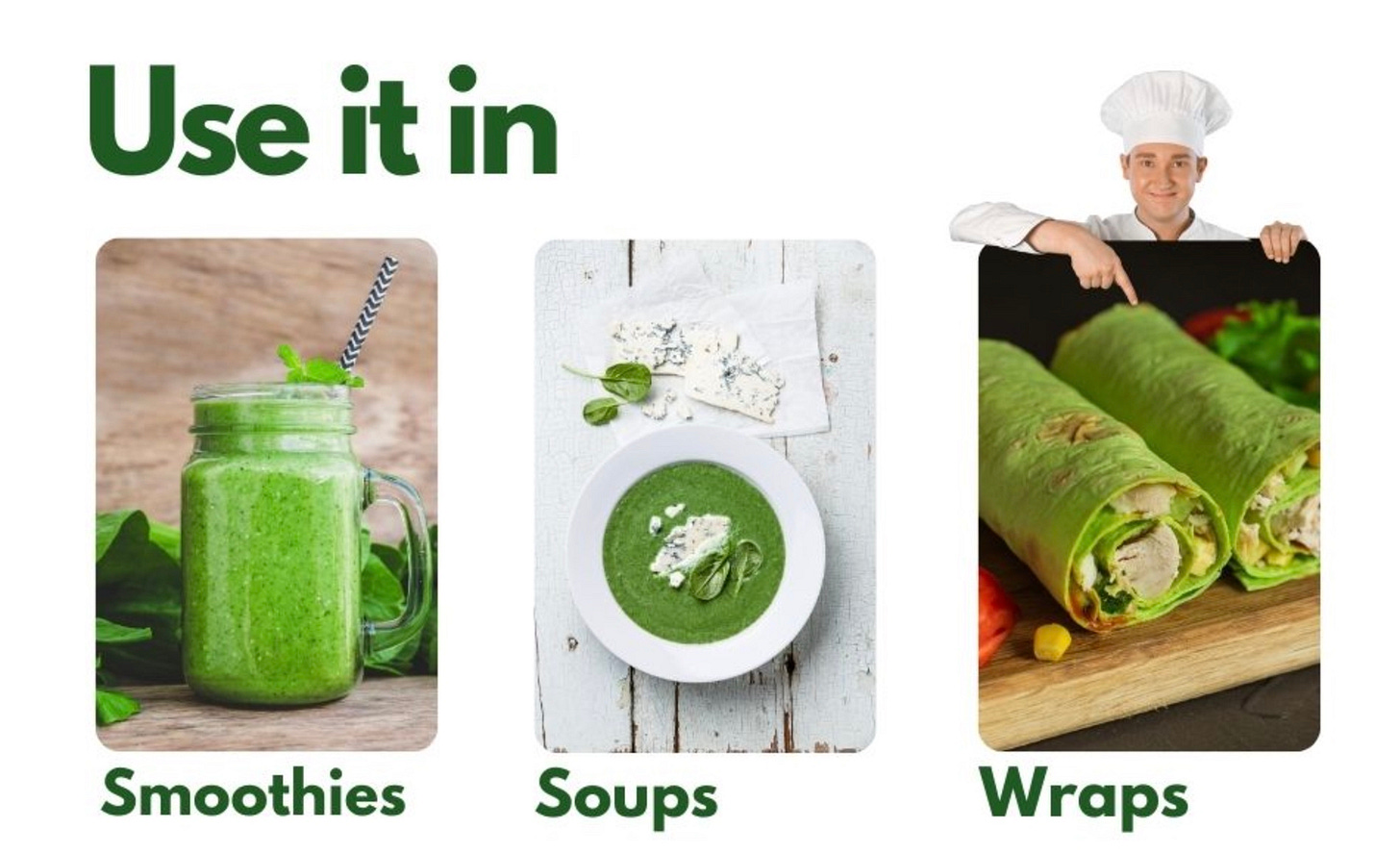Zac Efron, Kidney Stones, and the Secret Wisdom of Saag Paneer
What one Hollywood smoothie obsession and a thousand years of Indian cooking can teach us about biochemical balance.
I have fond memories of watching Popeye cartoons when I was a little kid, but the truth is, those ads for spinach as a health food have likely caused a lot of pain for a lot of people.
Mr. Skeptical leans in. “What do you mean? Spinach is supposed to be healthy.”
Subconscious Fat at 30,000 Feet
For decades, spinach has been marketed as the green badge of virtue — the vegetable that makes you strong, pure, and Popeye-approved.
But nature, as usual, plays a subtler game. Spinach is not the clean, harmless superfood you’ve been sold. It’s loaded with oxalates — compounds that bind to calcium, magnesium, and iron and can make them less absorbable or even toxic in excess.
Cultures figured this out long before science caught up. That’s why, from India to Greece to medieval France, spinach was rarely served by itself. It almost always came with dairy — yogurt, milk, butter, or cheese — which provides calcium to neutralize the oxalates and protect digestion and kidney health.
Mr. Skeptical tilts his head. “So you’re saying all those green smoothies are secretly plotting against me?”
“Yes. Spinach doesn’t want to be eaten. The oxalates are there as a chemical defense so that they don’t get eaten.”

Subconscious Fat at 10,000 Feet
Here’s the biology simplified.
Oxalates are organic acids that naturally occur in plants as a defense system. When you eat high-oxalate foods (like spinach, beet greens, almonds, or rhubarb), the oxalate can bind with minerals — especially calcium — in your gut.
If there’s not enough calcium present, the oxalate floats free into your bloodstream, then your kidneys, where it can crystallize into calcium oxalate stones.
A 2003 study in Kidney International found that pairing spinach with calcium-rich foods significantly reduced oxalate absorption compared to eating spinach alone. More recently, research published in the American Journal of Clinical Nutrition (2018) confirmed that dietary calcium reduces urinary oxalate, leading to fewer crystals and a lower risk of stones.
Mr. Skeptical shrugs his shoulders, “So all I have to do is eat cheese with my spinach and I’m invincible?”
“Not invincible. But you’ll be playing the same strategy your ancestors mastered without a lab coat.”
Subconscious Fat at Eye-Level
Let’s make it real.
Remember when actor Zac Efron went public about his health crash? He was living on green juices, beets, and spinach smoothies — and ended up in the hospital with kidney stones.
He described the pain as “like passing razors.”
That’s not poetic exaggeration; it’s the sound of oxalates crystallizing their way through the urinary tract.
His body had become too “clean” for its own chemistry — too much spinach, too little calcium to buffer it.
Centuries earlier, people already knew better.
India’s saag paneer — spinach cooked with spiced cream and cheese — might be one of the oldest functional food pairings in the world. Calcium-rich paneer binds the oxalate and softens digestion.
Greece’s spanakopita mixes spinach with feta and eggs.
France’s spinach gratin layers cream and butter over wilted greens.
Even Iranian and Turkish dishes often pair spinach stews with yogurt or kefir.
None of these traditions came from a biochemistry textbook — they came from generational observation: people felt better eating spinach with dairy.
Mr. Skeptical puckers his lips, “So all those cultures just accidentally created anti-kidney-stone cuisine?”
“Call it intuition or survival data. Before nutrition labels, taste and aftermath were the only metrics that mattered. And my personal opinion is that people added spinach and dairy so there would be enough meat for everybody. In other words, spinach was and still is ‘Filler Food.’
Practical Suggestions and Conclusions
Spinach ≠ harmless. It’s nutrient-dense but oxalate-heavy. Treat it like a condiment, not a staple.
Pair it with calcium. Add cheese, cream, yogurt, or even a splash of milk — these neutralize oxalates and improve mineral absorption.
Cook it. Boiling or blanching spinach reduces oxalate content by up to 50%, according to Food Chemistry (2015).
View it for what it is: FILLER FOOD
Mr. Skeptical adds, “So you’re basically saying the ‘healthiest’ smoothie ingredient might be a kidney stone delivery system?”
“Exactly. Spinach is ok as a filler food when it’s contextualized — not idolized. The dairy wasn’t indulgence; it was the antidote.”
Be aware.
Other links related to this post:
The Romans Had a Technology Superior to Ours
PS Links on LinkedIn, Facebook, Instagram, X, and Notes. Full disclosure: ChatGPT was used to research and enhance this post.







